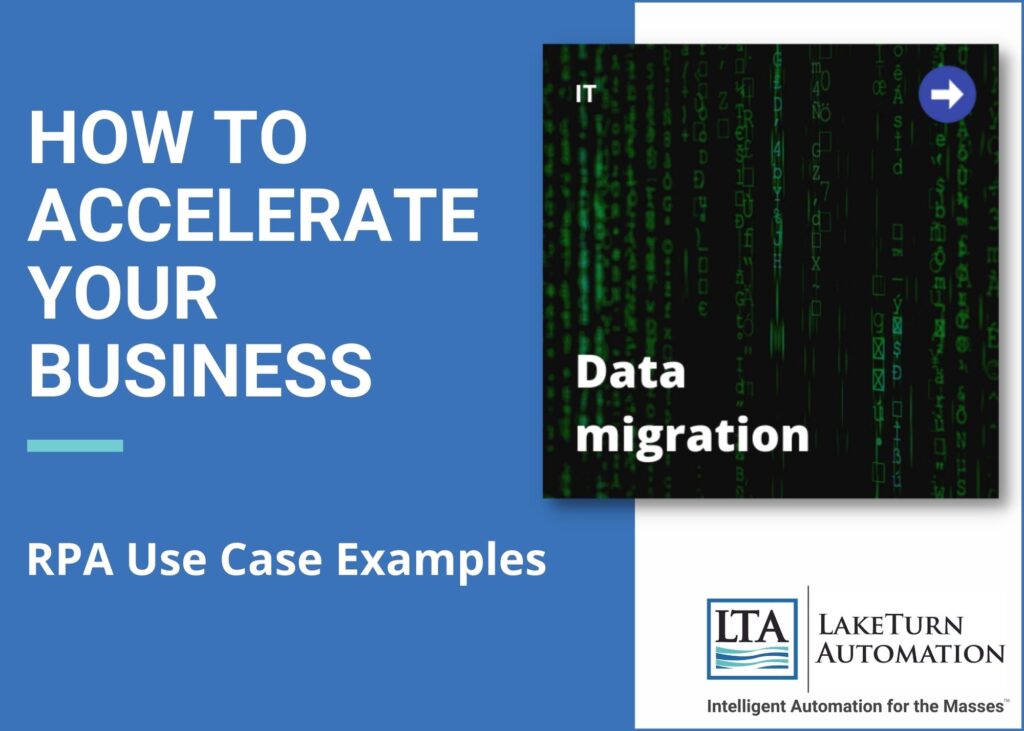Often overlooked, the unexpected effort required to migrate your existing data into a new software platform can lead to cost overruns and missed “go live” dates. A study by Bloor Research indicates that the failure rate for data migration projects is 38%. Utilizing RPA, you can expedite your transition to a new system while minimizing effort and risk.
Data migration is a critical, but often challenging, step in transitioning from one system to another (ex., Legacy ERP to cloud-based ERP). The data migration process can be complex, and underestimating the time and effort required can delay an entire software implementation project.
Historically, there have been three options for moving data from one system to another:
- Vendor Provided Data Upload Tools – Helpful, but typically don’t accommodate the entire database and lack the flexibility to map complex source system data.
- Custom Manual Conversion Programs and/or Scripts – The traditional method for moving large and complex data sets. While a reliable approach to migrating data, the required Developer effort can lead to implementation timeline and cost overruns.
- Manual Input of Data into New System – This approach is useful for small amounts of data but introduces keying errors and will not scale to migrate the historical data required for most system conversions.
Thanks to recent advancements in low-code/no-code development tools, there is a new option for migrating data between systems: Robotic Process Automation (RPA).
Using RPA software bots, a hybrid approach of options 2 and 3 above can rapidly be deployed as follows:
- Data extract tables or reports are created to retrieve and aggregate the data from the source system.
- Using the data in the extract tables, a bot operating at the User Interface (UI) level uses the actual data entry screens in the new system to enter the legacy data into the new platform. This UI level approach allows the new software’s built-in screen-based system edits and application processing to ensure that migrated data is 100% correct.
- Repeat 1 & 2 for each complex conversion required (ex. Customers, Orders, Invoices, PO’s, SKU’s, etc.)
Leveraging RPA to migrate data significantly reduces (or eliminates) the Developer time required for complex conversions and allows the data entry migration method to scale while eliminating human keying errors.
As you can see, Robotic Process Automation can significantly streamline the data migration process when moving to a new platform – especially when utilized for complex data migrations (ex. Salesforce). Contact us to learn more about utilizing RPA to turbocharge your new system implementation while significantly reducing the risks and efforts associated with traditional data conversion approaches.
